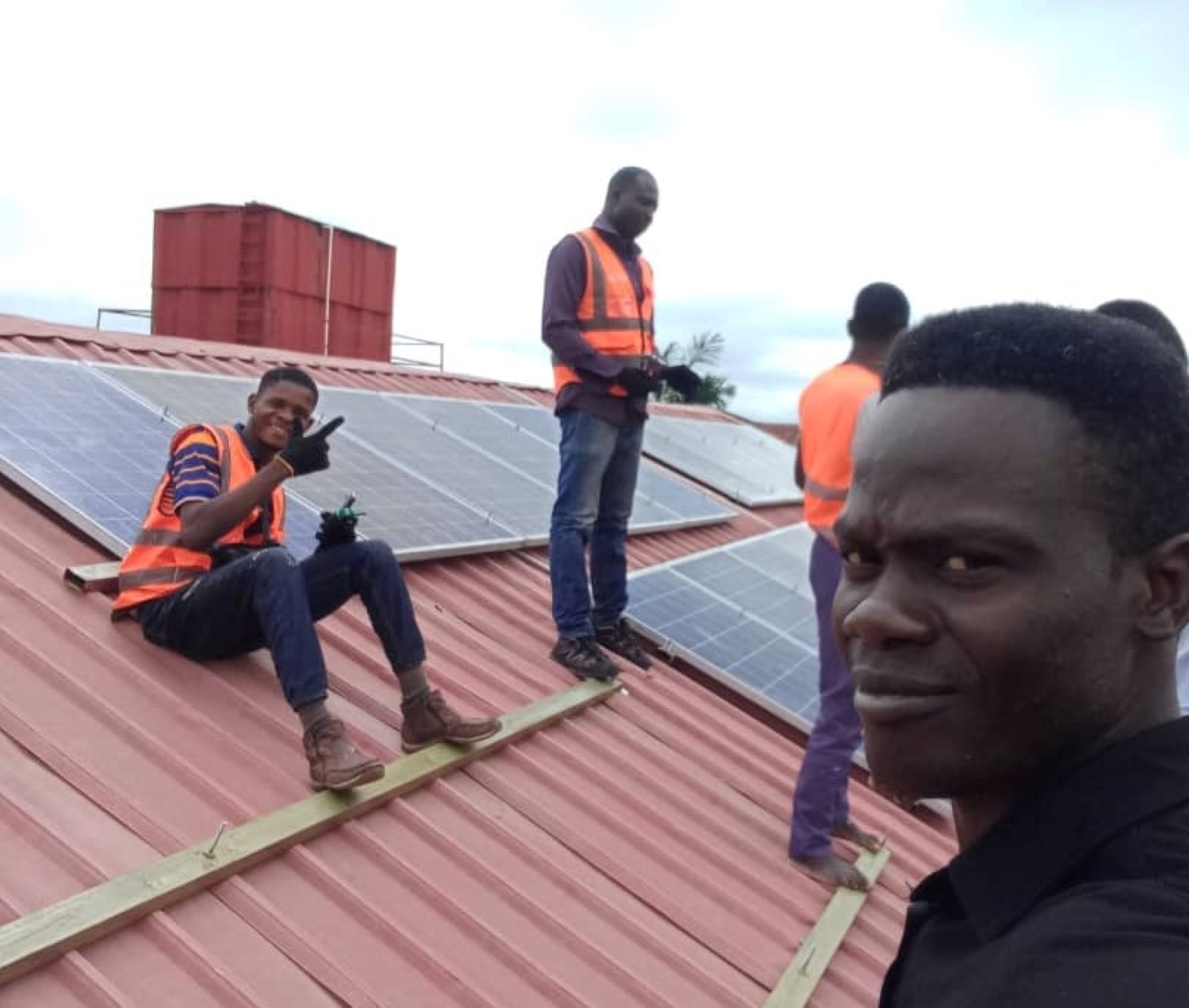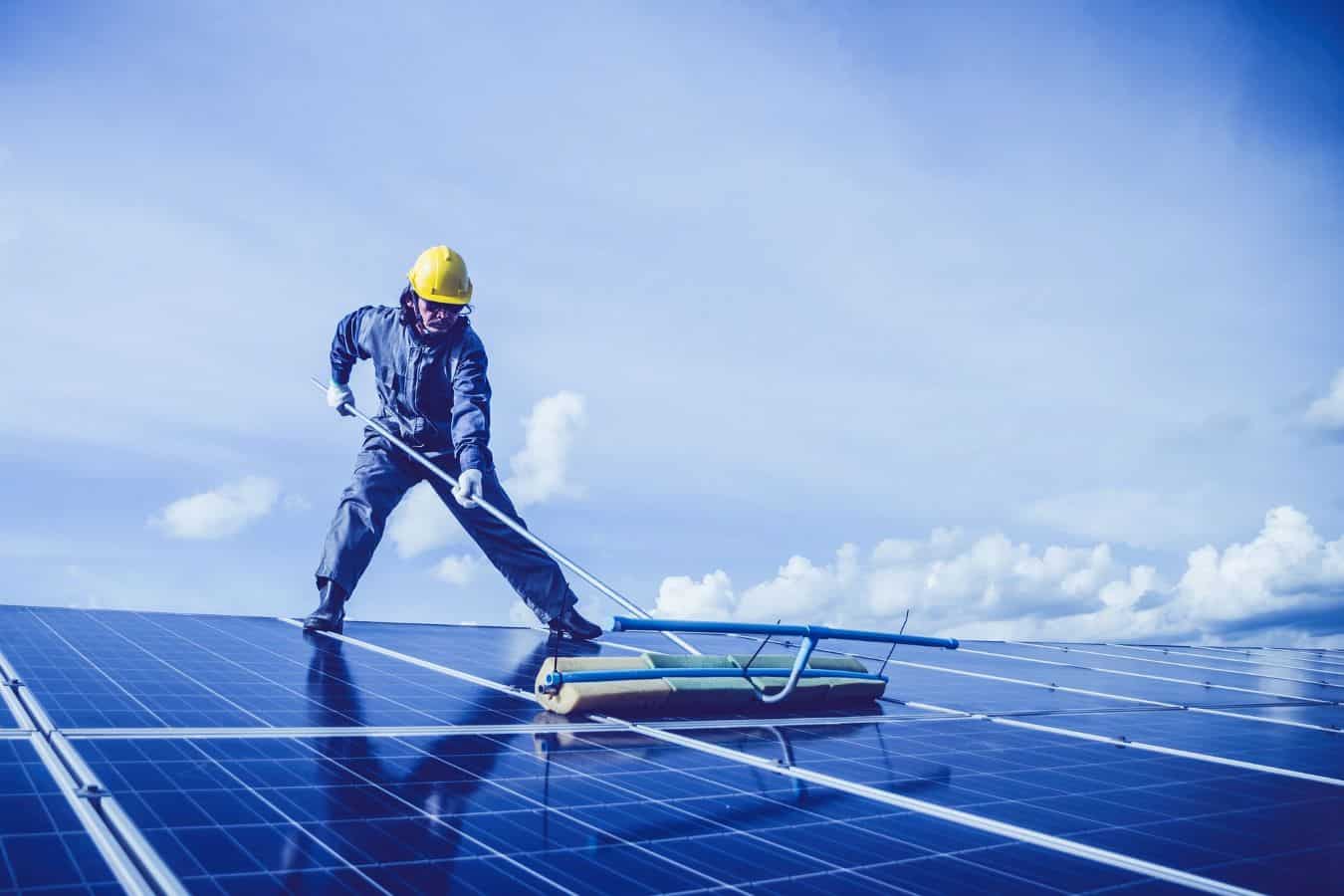Do you wonder what a monocrystalline solar panel is? Have you ever encountered the different types of solar panels and wondered what they are? Then this article is for you because it explains everything you need to know in detail.
Moreover, in our daily activities, light is one of the greatest needs of human existence, and sunlight has been a great opportunity for our existence.
On that basis, we will discuss the basics of monocrystalline solar panels in my overview. Also, the How It Works section will portray the operational sequence of this product.
As a result, one of these is the utilization of solar energy for a variety of tasks, including powering our tools and equipment and generating electricity. So, under the pros and cons section, I will also inform you of the benefits.
The features and factors to take into account and my advice will be presented after that in a comparison table.
I will cover all the information you require regarding this item in this article. In addition, I’ll give you my closing remarks, in which I’ll restate what I’ve said thus far.
Continue reading to learn more about it.
What Is Monocrystalline Solar Panel: Overview
A monocrystalline solar panel is a solar panel consisting of monocrystalline solar cells. However, the cells are all made up of a single crystal.
It provides the electrons with more space to move for better electricity flow. On the other hand, its cells are all made from pure silicon.
Hence, monocrystalline solar panels are more efficient and can produce more power. Likewise, this makes them the most effective material when converting sunlight into energy.
Also, it is space-efficient and can be more efficient in warm weather. In addition, it takes up the least space of any solar panel available presently and has the advantage of being able to last longer.
Hence, they are cut from a single silicon source, making monocrystalline solar panels more efficient. Finally, they function and perform better even in low-light conditions.
Differences Between Monocrystalline And Polycrystalline
Definition
Monocrystalline, as the name implies, has single-crystalline panels, which is the most developed category of solar panels.
Polycrystalline has multi-crystalline solar panels that are less efficient but more cost-friendly.
Composition
Monocrystalline silicon comes from cylindrical silicon ingots that you will slice to form silicon wafers.
Polycrystalline comes from melting and blending multiple raw silicon fragments in square molds, cooling them down to form wafers.
Also, the electrons have less space to flow because the cells come from multiple crystals.
Price Rate
Monocrystalline solar panels are more expensive, while polycrystalline panels are less expensive.
Hence, before making your purchase, consider your budget.
Duration
They both have different durations. Monocrystalline solar panels are 25–40 years long, while polycrystalline solar panels are between 20-35 years long.
Appearance
They both have different appearances. The monocrystalline panel has a black hue, while the polycrystalline panel has a blue hue.
Hence, it has a uniform black look because they make the cells from a single piece of silicon.
Effectiveness
Monocrystalline panels are more efficient than polycrystalline panels. This is because it has a higher efficiency than polycrystalline panels.
Moreover, polycrystalline solar panels are made from different silicon sources, thus making them less efficient.
Also, monocrystalline solar has one pure silicon crystal. On the other hand, the polycrystalline solar panel has many silicon crystals.
How Monocrystalline Solar Panel Works
Consequently, monocrystalline solar panels work through sunlight and are easily identified by their deep black color.
Hence, when sunlight shines on it, the cells absorb the energy and flow through a process to create electricity. On the other hand, they make them from pure silicon.
Likewise, this can be the most effective material when converting sunlight into electricity. On the other hand, I contain 60 to 72 solar cells, depending on the size.
Nonetheless, it takes little space and is the most space-efficient form of a solar panel. In addition, you will need fewer monocrystalline solar panels for your solar power system to generate an equal amount of power.
Furthermore, you can use electricity to charge devices that run on direct current(DC). Overall, it can be reversed to alternating current (AC) using an inverter, and it is also perfect for those with limited roof space.
Applications
Monocrystalline is for large-scale installation and is popular amidst solar rooftop systems. They are best for industrial, commercial, or residential.
Also, it can power microwaves and fridges, and in some cases, it can power the entire house.
Small-scale and large-scale use polycrystalline solar panels to utilize installations as they come in a vast range of power wattages.
They are often in large solar farms usage, roof-mounted arrays, traffic lights, houses, etc., because there are cheap and more eco-friendly.
What Can Damage A Solar Panel?
Many things can damage the monocrystalline solar panel through different means. This include:
Water Damage
Always check through the sealing to ensure a water-tight fit to keep your solar panel from damage.
Furthermore, ensure you check through to avoid and protect your solar panel.
Leaves and Dirty
You must maintain the trees around your house to prevent branches and dirt from falling on your solar.
In addition, always clean your solar panel regularly for maximum effectiveness.
Bad Weather
Bad weather can also damage your solar panel, and that is why you need to take note of the weather.
Moreover, ensure you set up the right solar depending on the weather in your location.
Things To Look Out For When Buying A Monocrystalline Solar Panel
Monocrystalline solar panels have different features that make them unique. Likewise, this makes it different from the other types of solar panels. Read on to discover its unique features.
Consequently, it has photovoltaic properties. Hence, photovoltaics is a method that can generate electric power through the use of solar.
However, this is done by converting energy from sunlight into a direct current of electricity. Likewise, it reduces the rate of reflection and adds more absorption.
Also, manufacturers empower it to enable the creation of an electric field and enable it to last longer. Furthermore, it can receive more energy from sunlight and be used for different purposes.
In addition, the monocrystalline solar panel has more features than other solar panel types. Overall, it can take on a greater level of heat resistance.
Even with these features, before you purchase a monocrystalline solar panel, you should consider the following:
Price
Before you make your purchase, you should consider your budget.
Hence, this will enable you to prepare and plan well before you purchase. It is because it is more expensive.
Lifespan
Specifically, it is necessary to check through the lifespan of the solar panel before making your purchase.
In the same way, it will enable you to know how long they can last and how much more they can function.
Temperature Efficiency
It has a higher temperature coefficient and can deliver high efficiency.
Hence, select carefully and consider the temperature coefficient before making your purchase.
Uniqueness
The physical appearance of the solar panel depends on your choice and sense of attraction.
Moreover, the monocrystalline solar panel is black and may be your preferred color.
Advantages and Disadvantages of Monocrystalline Solar Panel
Pros
The monocrystalline sources are clean and renewable energy.
One of the benefits of a solar panel is that it is a source of solar energy and a monocrystalline solar panel is no exception.
Also, it gets its resources from the sun and does not use fuel which can produce carbon harmful to the environment.
Additionally, modern monocrystalline can produce more energy than you consume. You can sell the surplus energy or can store it for future use.
It has the highest level of efficiency.
This solar panel has the highest efficiency level and can produce excess power that is too surplus to consume.
Also, its longevity is another aspect of its level of efficiency. It is tested and trusted in its efficiency level and is second to none.
Requires less space
Additionally, solar panels require lesser space. Therefore, they do not occupy larger space like other solar panels.
Saves money on electricity bills
Apart from yielding much more energy than other solar panels, it also reduces electricity bills.
The monocrystalline greatly affects cutting down an electric bill, which is also an aspect of solar energy.
Low maintenance
Maintaining a monocrystalline is low because it is installed on the rooftop and does not require constant maintenance.
Also,
Has the ability to last longer
The monocrystalline can last a long time and can last from 15 to 30 years, depending on the maintenance and its position.
Furthermore, they tend to function longer than their warranty period.
It is perfect for cloudy areas and safer than traditional electricity.
It may interest you that monocrystalline solar panels also work in cloudy areas and is safer than traditional electric current.
Similarly, it has a lower potential for electric shocks and power outages.
Even so, it is safer for health as it releases no emissions or gases because it is fossil-free, unlike fossil fuels.
High returns on investment
They can yield more energy that will be surplus to consume. Hence you can sell this excess supply and earn income.
Also, since it is more beneficial in the long run, you have high returns on your investments and will enjoy more of its less maintenance.
Potential to live completely grid-free
There are also capable of harnessing enough energy to power every aspect of your home. Therefore, they are free from the grid.
Easy to install
Generally, the cost of solar panels has fallen over the past years. In addition, monocrystalline is easy to install, unlike other renewable sources such as wind, hydro, etc., which require complicated wiring and equipment.
Furthermore, it has been constant technological advancements in monocrystalline solar panels and solar panels. These developments and research have yielded much increase in the effectiveness of solar panels.
Cons
It is the most expensive solar panel.
Even with the fall in prices of most solar panels, monocrystalline solar panels are still quite expensive than polycrystalline.
It is not ideal in the shade.
Also, it is not ideal in the shade because it works better in a high-temperature environment.
Furthermore, in cases of the panel is covered by dirt, snow, or shade, the circuit will break down more often.
Removing silicon will produce many waste materials.
If you remove the silicon, there will be many waste materials.
In addition, there can be a circuit breakdown.
Now that you have the knowledge of monocrystalline solar panels, let us consider some of the best on the market and their specifications.
My recommendations are listed in descending order. That is, from the last to the overall best.
What Is Monocrystalline Solar Panel: My Recommendations
| Product Name | Dimensions | Weights | Wattage Voltage | Material |
| Renogy 4pcs Solar Panel Kit | 39.5 x 2.8 x 65.6 inches | 199.6 pounds | 320 Watts 24 Volts | Silicon |
| Renogy 400 Watt 12 Volt Monocrystalline | 42.2 x 19.6 x 1.38 inches | 72.8 pounds | 100 watts 12 Volts | Aluminum |
| Newpowa 9BB Cell 200W Monocrystalline | 55.28 x 27.76 x 1.38 inches | 31.3 pounds | 50 Watts 12 Volts | Tempered Glass |
| Renogy 200 Watt 12 Volt Monocrystalline | 47.3 x 21.3 x 1.4 inches | 0.01 ounces | 100 watts 12 Volts | NA |
| SOLPERK 200W Solar Panels 12V, Monocrystalline | 40.5 x 23 x 3.7 inches | 16.1 Pounds | 100 Watts 12 Volts | Silicon |
Frequently Asked Questions On Monocrystalline Solar Panel

Charging of devices and appliances
Heat your water
Provide light and availability of non-disturbed electricity.
Bad weather, dirt, dust, leaves, and water can damage it.
Lack of maintenance, improper installation, bad weather, snow, winds, humidity, and the backup battery can shorten the lifespan.
Consequently, monocrystalline solar panels have an average lifespan of 25 to 30 years. However, it does not mean that it will stop functioning at the end of 30 years. Hence, it only means that the effectiveness will reduce gradually. Furthermore, the solar panel’s production of generating electricity decreased.
Monocrystalline solar panels are more efficient and can produce more power. Hence, they are cut from a single silicon source, making monocrystalline solar panels more efficient. Likewise, it is space-efficient and can be more efficient in warm weather. Overall, they function and perform better even in low-light conditions.
Monocrystalline panels are highly efficient. It can convert 20% of sunlight into usable energy.
To get this, divide the number of daily peak sunshine hours in your location by the average hourly wattage required. This tells you how much energy your panels must produce each hour. So, in a region with five peak solar hours each day, the average U.S. residence (900 kWh/month) would require 6,000 watts.
They are the most effective and efficient solar panels and produce more power per square foot.
There are polycrystalline and monocrystalline.
Due to the different electrical characteristics of the panel, though not typically recommended. However, through mixing, it is possible.
My Final Thoughts On Monocrystalline Solar Panels
This concludes the discussion on the essential things you need to know about monocrystalline solar panels.
Recently, solar power has become the fuel of the future. It is the world’s fastest-growing source of power.
However, monocrystalline solar panels have an average lifespan of 25 to 30 years. Therefore, it does not mean that at the end of 30 years, it will not work.
Hence, it only means that the effectiveness will reduce gradually. It discusses all the necessary things you need to be aware of before making your purchase and why you should purchase.
Hence, suppose you need stable electricity for your business or other things, you should go for a monocrystalline solar panel. Moreover, different types have been explained for you to pick any of your choices.
I believe you are enlightened by this article, which has opened your eyes to understanding how solar panels can benefit you.
If you found this monocrystalline solar panel reviews helpful, kindly spare a few minutes to share your thoughts with PowerVersity guide by using the reply form below.
Finally, for more reviews, please visit our Solar Panel page. You may also find our Renewable Energy page very helpful.
Further Readings And References
What Is A Solar Attic Fan?: Best Solar Attic Fans
ecowatch.com – Monocrystalline Vs. Polycrystalline Solar Panels (What’s Best?)
solarreviews.com– Types of solar panels: which one is the best choice?
energysage.com – Monocrystalline and polycrystalline solar panels: which is the best for you?




